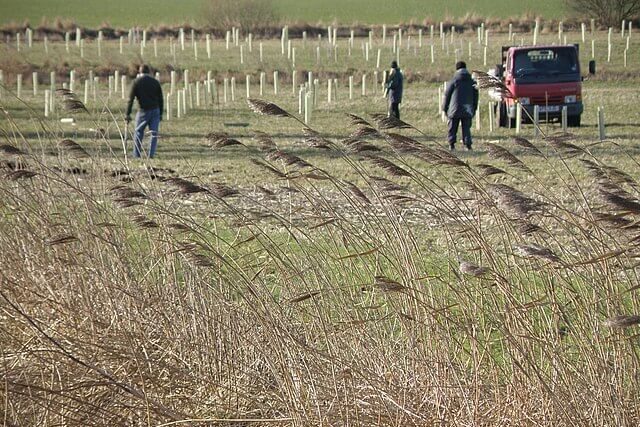
Tree Planting in Northern Ireland Falling Far Short of Targets, Report Warns
Tree planting in Northern Ireland is progressing too slowly to meet legally binding targets, leaving thousands of residents in “tree poor” neighbourhoods, according to the Woodland Trust.
The organisation’s latest report, State of the UK’s Woods and Trees: Northern Ireland, warns that failure to meet planting goals is undermining climate action, nature restoration and community wellbeing.
Planting Progress Well Below Target
Between 2020 and 2024, less than 20% of the woodland area needed to reach the 2030 target has been created.
Only 1,700 hectares have been planted out of the required 9,000 hectares.
A further 500 hectares has been planted since the data was compiled. However, that still leaves almost 7,000 hectares to be established within the next five years, representing over 75% of the target yet to be achieved.
Calls for Stronger Protection and Investment
The report highlights the need for:
-
Stronger protection for ancient and long-established woodland
-
Greater investment in forestry and woodland management skills
-
Improved evidence and monitoring
-
Prioritising tree planting in areas with the lowest existing tree cover
Northern Ireland currently has the lowest woodland cover in the UK and Ireland.
Only 8.6% of its land area is wooded, compared with 19% in Scotland, 15% in Wales, 11% in the Republic of Ireland, and 10% in England.
Minister Promises Action Plan
Agriculture, Environment and Rural Affairs Minister Andrew Muir said his department will develop a Northern Ireland Tree Planting Action Plan in the coming months.
He acknowledged that the rate of tree planting must increase “substantially” and emphasised the importance of protecting and restoring existing woodlands.
“The rate of tree planting and woodland creation needs to increase substantially to deliver tree planting targets, meet afforestation policy objectives and deliver on our climate change commitments,” the minister said in a statement.
“We must harness the extensive knowledge and experience of stakeholders to re-energise tree planting efforts and I believe that by working together we can overcome barriers and deliver necessary actions to drive our ambition around woodland creation.”
Threats to Trees and Woodlands
Northern Ireland’s trees face growing pressure from:
-
Pests and diseases, including ash dieback
-
Deer browsing
-
Pollution
-
Extreme weather linked to climate change
Urban Areas Particularly Affected
Urban Tree Canopy Cover (UTCC) averages just over 15% across Northern Ireland, among the lowest in the UK.
In many towns and cities, the figure drops below 10%, meaning large numbers of people live in areas with very limited access to the environmental and wellbeing benefits of trees.
Need for Coordinated Effort
John Martin, Director of the Woodland Trust NI, said Northern Ireland “very much needs” to increase tree planting rates.
“We haven’t met those targets and at the minute there is no plan in place to help meet those targets in a way that’s efficient to get to 2030.
“The best time to plant a tree is 10 years ago, the second-best time is today.
“So we need to get on with this urgently.”He noted that delays have been influenced by land use changes following Brexit, which reduced incentives that previously supported woodland creation under the EU’s Common Agricultural Policy.
“There are still incentives there absolutely, but there is less certainty around what those incentives look like going forward.
“There’s also been some delay to those grants going out.”
Ancient woodland is now extremely rare in Northern Ireland, accounting for just 0.04% of land.
“We visit probably some of our ancient woodland sites without even knowing they are ancient – some of those trees have been around since the 1600s,” Mr Martin said.
“They have a very specific biodiversity associated with them – very specific soil, very specific species that exist within there and I think we probably just take that for granted.”
The Woodland Trust NI director added that 75% of land in Northern Ireland is “managed for agriculture”.
“We’re very good at growing grass in Northern Ireland,” he said, but added: “We’re way behind in terms of tree cover in comparison to other parts of the UK and Europe”.
Mr Martin said those low levels of tree cover can have a direct impact on people.
“That health and wellbeing element is really important, but also those nature-based solutions – they draw in carbon, they give us shade, they improve water quality, they reduce flood risk.
“All of those things are really important and by increasing our afforestation, we can increase more of those benefits to wider society.”
——————————————————————————
At Natural World Fund, we are passionate about restoring habitats in the UK to halt the decline in our wildlife.

